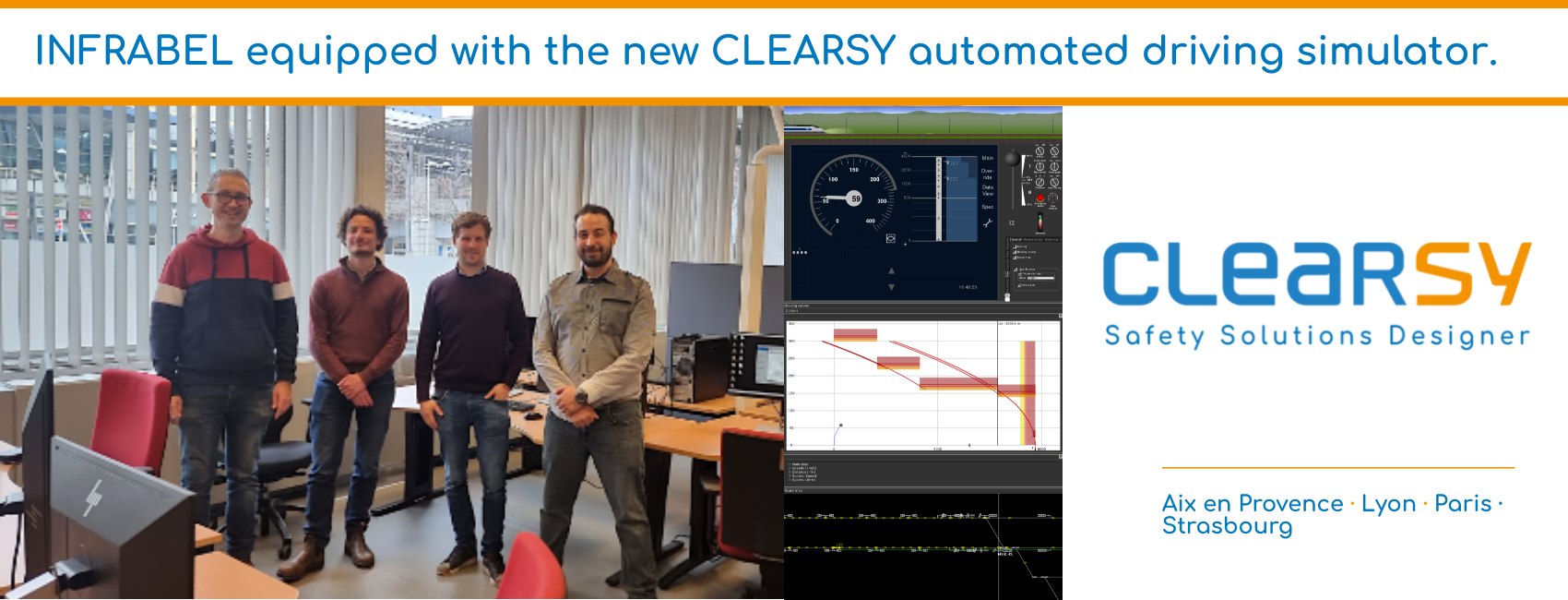
CLEARSY has just provided 6 automated driving simulators to the Belgian railway infrastructure manager INFRABEL, in order to carry out, among other things, the consistency tests of the track data on all routes of all ETCS level 1 lines in Belgium.
With the topological data, the Eurobalises and LEU telegram files, as well as the scenario files defining all possible routes, the simulator makes it possible to virtually and automatically run a train “equipped” according to one of the major versions of the ETCS standard (2.3.0d, 3.4.0, 3.6.0).
The functions of automatic play list, definition of test points to be monitored, automatic driving simulating various types of drivers and time acceleration allow users to run thousands of scenarios in a very short time and the simulator itself to report any problems detected.
Scenarios can also be replayed manually for further analysis if problems are detected.
In addition, the simulator offers extensive analysis possibilities, allowing all parameters to be visualised both in text and graphical form.
The new version of the software is T2 certified according to the CENELEC EN 50128 standard (SIL4 railway projects), which is a prerequisite for INFRABEL to use it in the context of its tests.

Here is an example of a picture of the simulation module in the execution phase. It allows to see in parallel the ETCS DMI display, the braking curves and the supervision limits, as well as the train position on the track plan.

Here is an example of an image of the analysis module displaying the data generated during the simulation.
It allows to see the behaviour of the simulated ETCS on-board system, the information received from the trackside (balise, loop, radio), the position of the train on the track, the state of the track (signalling), as well as a wide range of train simulation data (mode, level, interventions, braking curves, supervision limits, confidence interval, gradient under the train) at any time during the simulation.
The module also allows the generation of test reports as well as the generation of XML files allowing the recorded simulation data to be used outside the simulator.
Link to this référence
Link to this référence